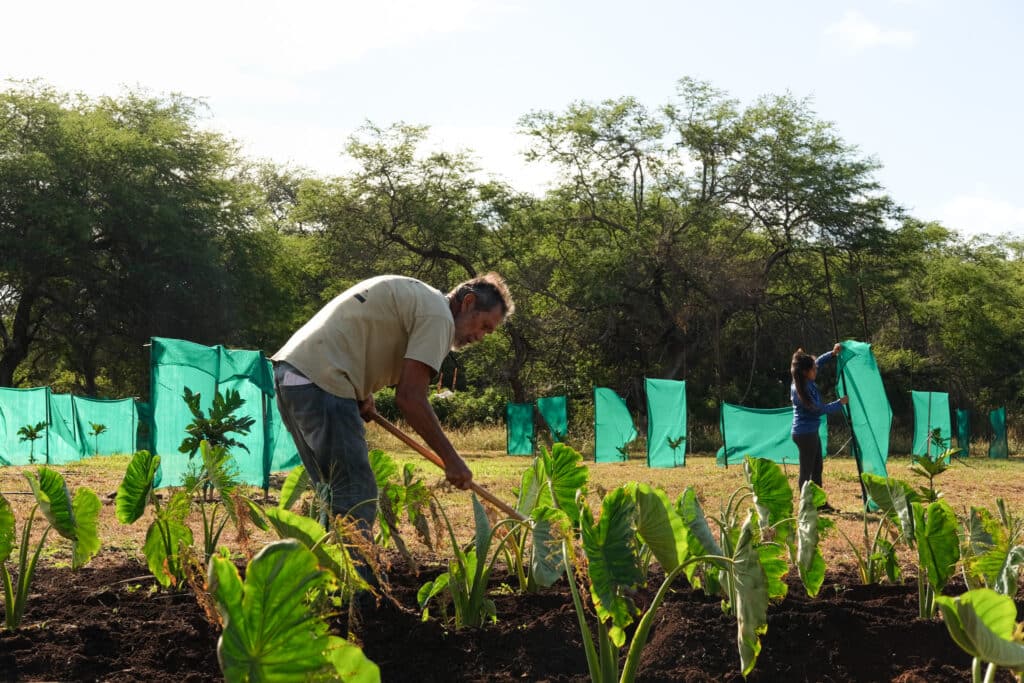
ʻĀina Momona: Restoring a Land of Abundance
‘Āina Momona is a Native Hawaiian 501(c)(3) organization founded by Walter Ritte for the purpose of achieving environmental health and sustainability through restoring social justice and Hawaiian sovereignty. In this guest blog post for Green 2.0, research and translation specialist Julie Au discusses the origins of the organization and why Hawaiian sovereignty is so important.
On Jan. 16, 1977, on the 84th anniversary of the illegal overthrow of the Kingdom of Hawaiʻi, a young Native Hawaiian activist who had just been arrested and sent to prison for “trespassing” on Native land addressed a large group of Hawaiians. The crowd was gathered outside of the ʻIolani Palace where our Queen was wrongfully dethroned and later imprisoned as Americans took over our sovereign country.
The activist’s name is Walter Ritte and he addressed the crowd saying, “one day, we are going to put a queen back over there…And I hope I’m alive when that day happens because I want to see our Queen back in office. I don’t want to have to go elect one puppet to talk for me, I like one Queen to talk for me.”
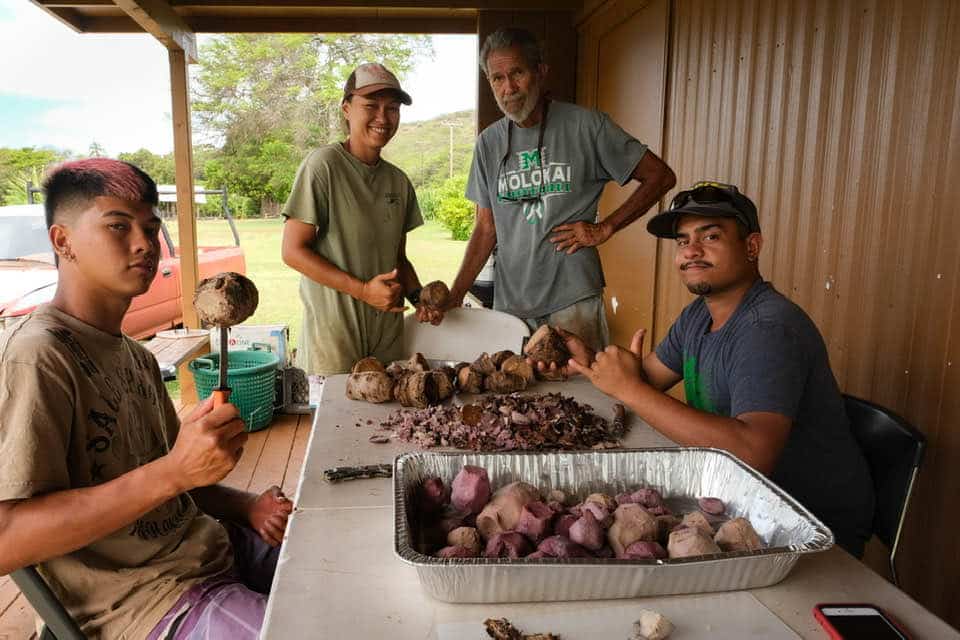
It’s been 129 years since that illegal overthrow. The “young activist,” Walter Ritte, will turn 77 this year. He is still fighting for the restoration of justice and sovereignty in Hawaiʻi and has been a pillar of social activism in Hawaiʻi for more than 40 years.
Uncle Walter is now a kupuna (elder) in our community who has dedicated most of his life to protecting Hawaiian land and resources and restoring traditional cultural practices.
Uncle Walter solidified his place in Hawaiʻi’s history in 1976 when he and eight others defied the U.S. military to protect the Hawaiian island of Kahoʻolawe which had long been seized and occupied by the U.S. Navy for military testing and target practice. In an unprecedented act of courage, “the Kaho‘olawe Nine” became the first native Hawaiians to step foot on the island, because the U.S. military had barred Hawaiians from entering.
Risking their lives to protect their ʻāina (land), Uncle Walter and another activist evaded capture for 35 days before being found by the U.S. military and arrested for trespassing. Uncle Walter served his six-month sentence in a maximum-security prison until being released. Due to the Kahoʻolawe Nine’s actions, live-fire training on Kahoʻolawe came to an end in 1990 and the island is being restored after years of bombing and artillery damage.
Uncle Walter continues to advocate for a free Hawaiʻi and in 2017, he founded ʻĀina Momona, a native Hawaiian nonprofit dedicated to achieving environmental health and sustainability through restoring social justice and de-occupying Hawaiian lands. Uncle Walter serves as the Executive Director of ʻĀina Momona, which means “land of abundance” and aspires to reach some of Uncle Walter’s goals for Hawaiʻi and the land he has risked his life to protect.
‘Āina Momona focuses on issues critical to the health and well-being of Hawaiʻi’s future and applies a grassroots approach to the work we do. Our projects center on traditional methods of land restoration and land management with four focus areas: wai (freshwater), ʻai (food and agriculture), ‘āina (land and natural resources), and ea (social justice).
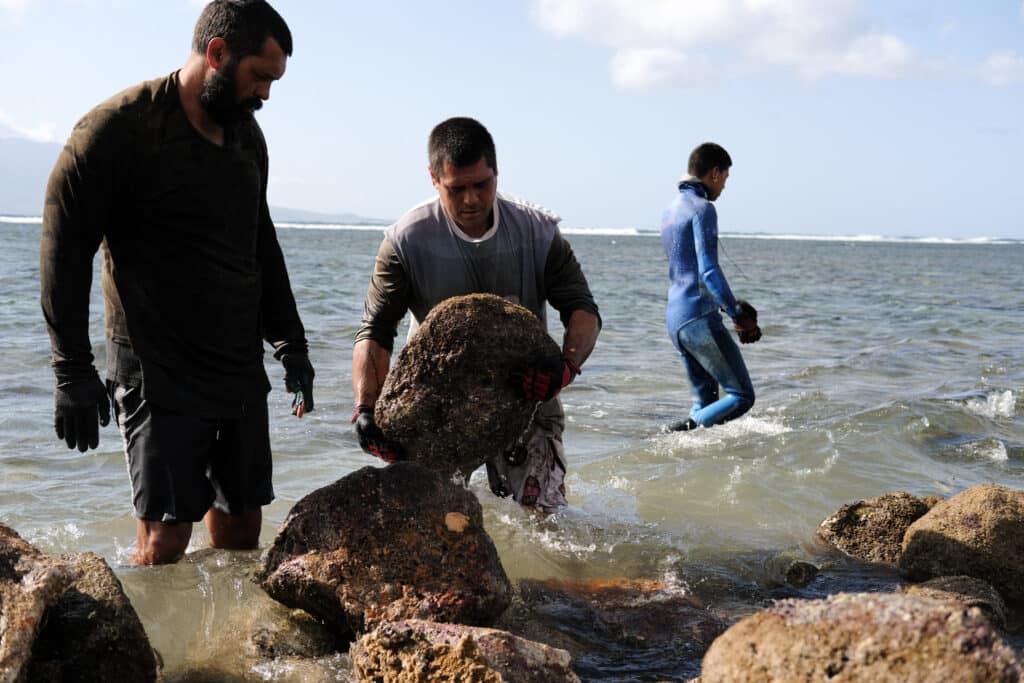
It is our broader goal to equip native Hawaiian communities with the resources needed to be self-sufficient, sustainable, and resilient in the face of capitalism, colonialism, and the ongoing climate crises. We envision an ecologically and politically sovereign Hawai‘i, where natural and cultural resources thrive under the care of a just, healthy, and sustainable population.
The majority of our work focuses on the island of Moloka‘i, one of the most rural and underserved islands in the Hawaiian archipelago and Uncle Walter’s home island. The island population is roughly 5,000 people and residents are largely native Hawaiian and low-income.
Over 90% of goods are shipped to Moloka‘i through a single harbor. As early as 2018, barge shipments were stalled due to climate change- induced storms, leaving the community even more vulnerable and food insecure than usual. The COVID-19 pandemic in 2020 made this dire situation even worse.
Despite its marginalized position, Moloka‘i has the highest level of sustainability in the state, with 38% of food consumed on island coming through traditional subsistence practices rather than being purchased in stores. A key part of ‘Āina Momona’s vision is to grow the subsistence economy on the island and address the inter-connected educational, economic, environmental, social justice, and entrepreneurship needs through restoring the land and traditional food systems.
“Āina Momona will never stop fighting for the rights of native Hawaiians to serve and protect their land. We will never stop advocating for our right to restore the lands that Molokai Ranch occupies. Native Hawaiians will always be here, even once our physical bodies have returned to the reddened earth, and that is what truly makes us an ʻāina momona.”
In striving to bring greater justice to Molokaʻi, one of the key issues our team focuses on is the potential sale of Molokai Ranch, an enormous private estate that takes up one-third of the island, and whose sale has major implications for Moloka‘i’s future. Due to decades of unsustainable agriculture and ranching operations as well as gross land mismanagement from private owners, the soil on Molokai Ranch has become heavily eroded, creating dangerous coastal runoff that puts Molokaʻi’s abundant fringing reef at risk. Invasive species have also become an issue as uncontrolled deer populations exacerbate erosion. These land issues and their impacts are seen and felt throughout Molokaʻi, going beyond Molokai Ranch lands and covering huge areas of the island, pointing to the growing need to improve current land management practices in Hawaiʻi.
The history of Molokai Ranch and the lands they occupy is one that reveals the legacy of colonialism in Hawaiʻi. In 1884, Aliʻiwahine (chiefess) Bernice Pauahi Bishop died. Pauahi had the largest private estate in Hawaiʻi at the time of her death, owning a total of 485,563 acres of land throughout the islands, which is approximately 9% of the entire Hawaiian archipelago. In her will she expressed that she wanted a large portion of her estate (375,569 acres) be used to start schools for Native Hawaiian children called the Kamehameha Schools. After her death, her husband, Charles Reed Bishop, managed her estate. Pauahi’s will named the following five men as trustees for the Kamehameha Schools: Charles Reed Bishop, Samuel M. Damon, Charles M. Hyde. Charles M. Cooke, and William O. Smith, who would go on to have a hand in the illegal overthrow of the Hawaiian nation. Pauahi and her husband Bishop had placed their confidence in the wrong people.
This story is just one of many that we Native Hawaiians carry with us. Many land sections throughout Hawaiʻi no longer contain fertile soil or an abundance of natural resources, but our land is fat with hope, potential, and aloha. It is the native Hawaiian community and our dedication to protect and serve the land, who we believe is our ancestor, that keeps Hawaiʻi momona. Not even time itself has been able to tread on this reality. We live in an ʻāina momona because the makaʻāinana, the people of the land, keep it that way. Our sweat, blood, and tears water the arid lands left to waste. Our hands overturn the erosion of time. Our aloha and dedication to our island homes keeps the land rich with potential and gives it a future.
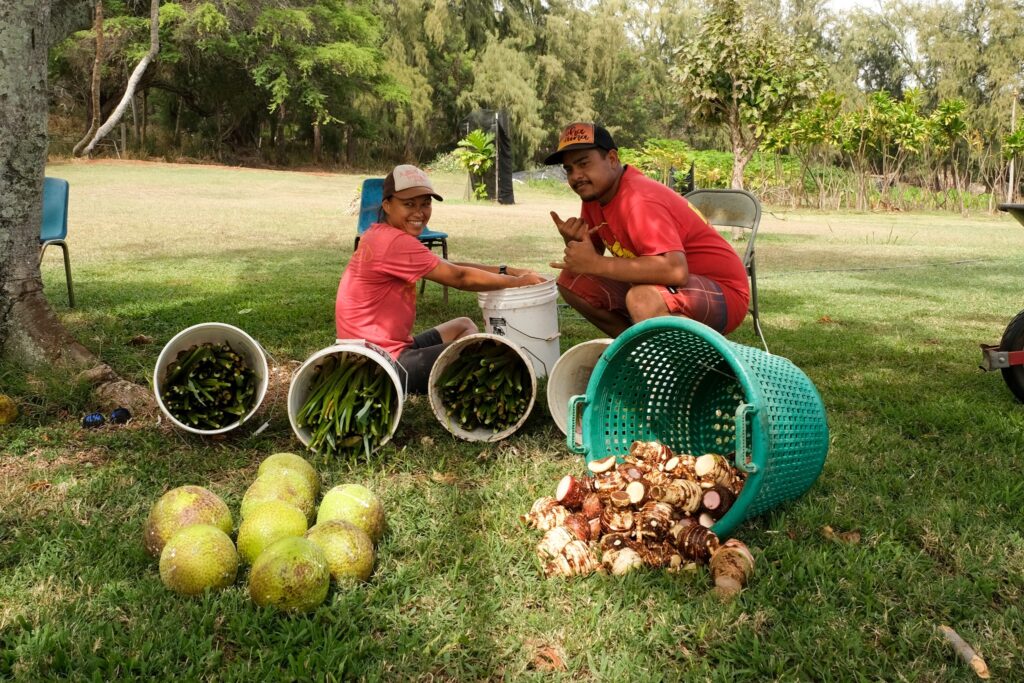
ʻĀina Momona will never stop fighting for the rights of native Hawaiians to serve and protect their land. We will never stop advocating for our right to restore the lands that Molokai Ranch occupies. Native Hawaiians will always be here, even once our physical bodies have returned to the reddened earth, and that is what truly makes us an ʻāina momona.
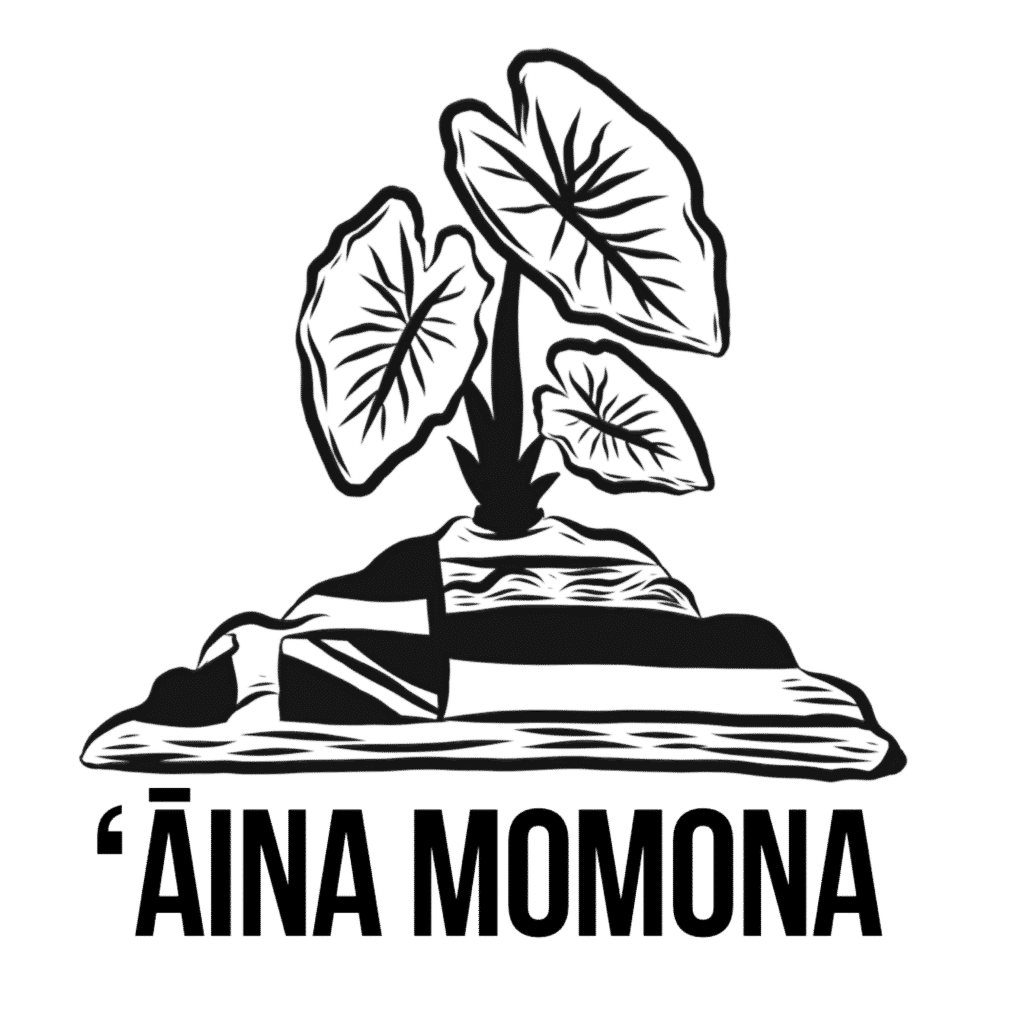
To learn more about ‘Āina Momona, visit www.kaainamomona.org and follow the organization on Instagram ainamomona and Twitter @aina_momona.